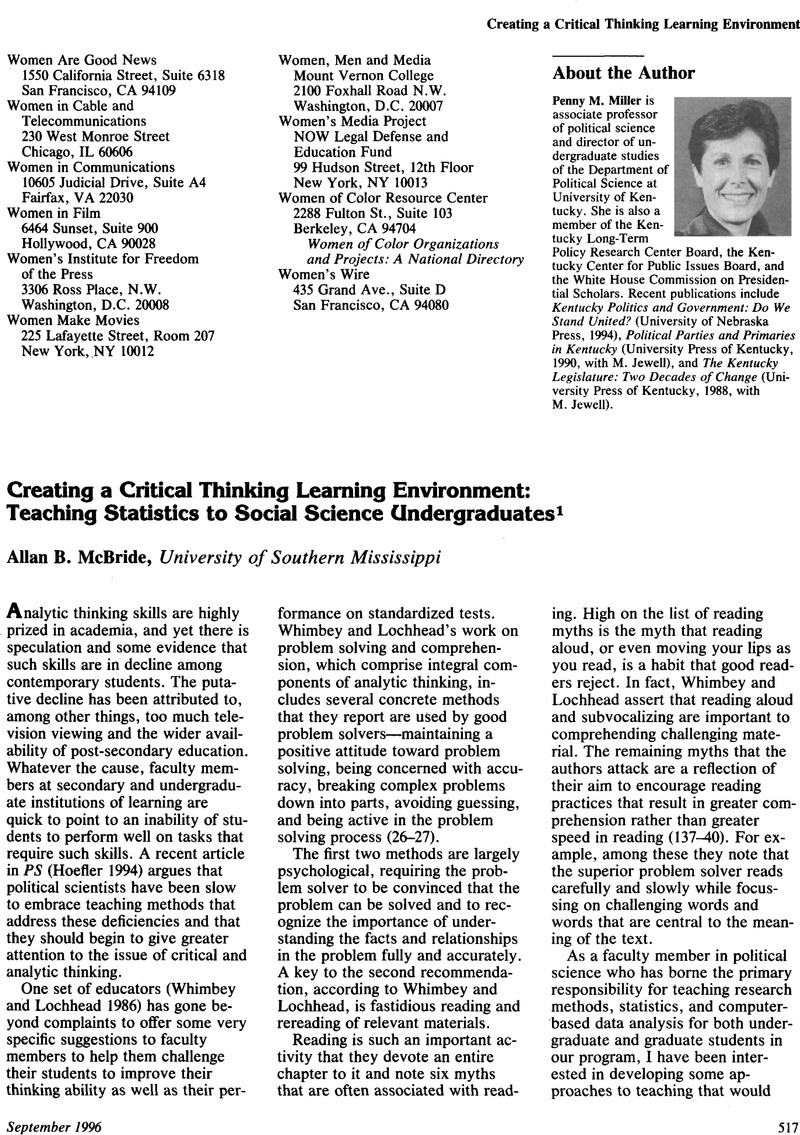Crossref Citations
This article has been cited by the following publications. This list is generated based on data provided by Crossref.
Jamie, D. Mills
2002.
Using Computer Simulation Methods to Teach Statistics: A Review of the Literature.
Journal of Statistics Education,
Vol. 10,
Issue. 1,
Ishiyama, John
and
Breuning, Marijke
2003.
Does Participation in Undergraduate Research Affect Political Science Students?.
Politics & Policy,
Vol. 31,
Issue. 1,
p.
163.
Brown, James Dean
2013.
Teaching Statistics in Language Testing Courses.
Language Assessment Quarterly,
Vol. 10,
Issue. 3,
p.
351.
Thornburg, Matthew P.
and
Botsch, Robert E.
2023.
The Palgrave Handbook of Teaching and Research in Political Science.
p.
259.





